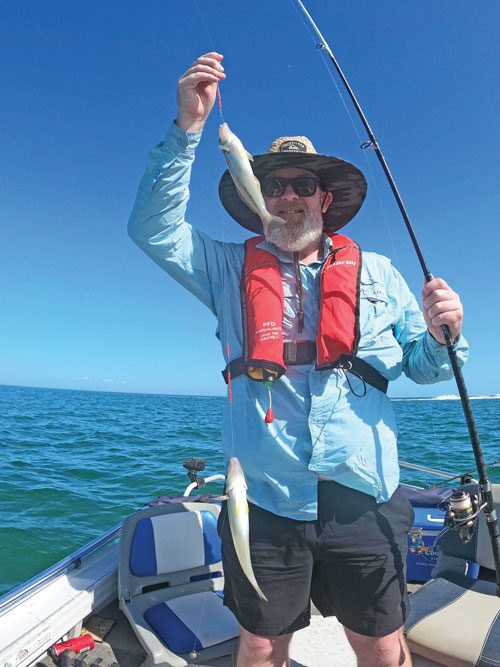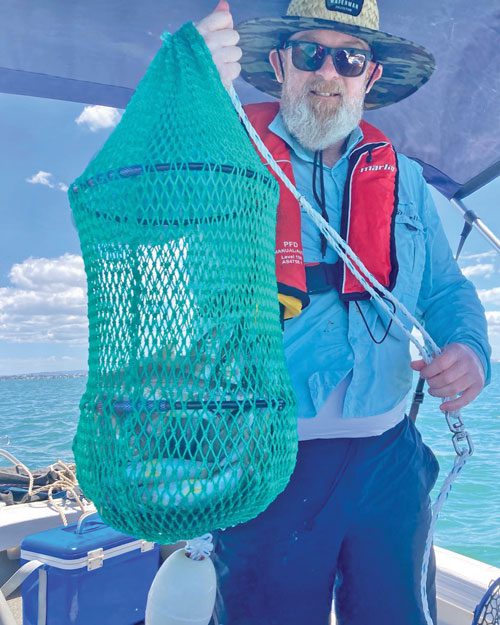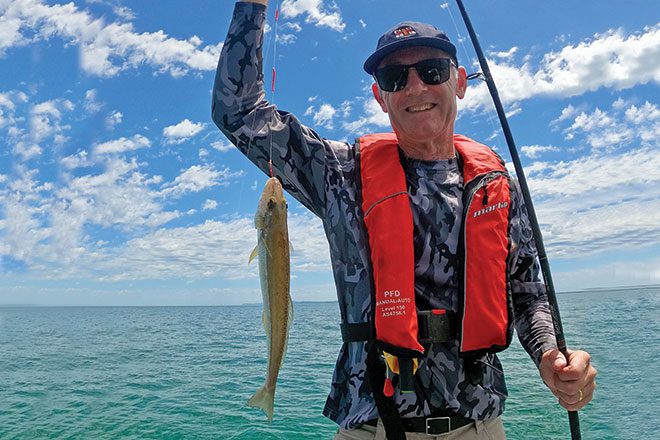Well, school may be out but there are schools of fun to be had in Moreton Bay currently.
Two of my favourite species to target in the bay were about in good numbers towards the back end of last year, in the form of schools of winter whiting and school mackerel.
Even better, as we get further into January, schools of banana prawns in the deeper holes of the rivers and tiger and bay prawns in the Moreton Bay foreshore shallows at night will also be increasingly available.
Winter whiting in summer
So, let’s start with schools of whiting.
They have continued in good numbers around the Rous Channel and in front of the Sandhills, for those with bigger boats to access them.
At this time of year, I find the ideal depth for them – at least around the Rous – is between 2.5-3.5m of water.
As usual, I prefer to drift for my whiting, though anchoring can work if you use berley.

If using berley, I prefer to make it from pre-mixed pellets with a flavouring, such as aniseed in a delicates laundry bag.
It’s a good idea to buy your own specifically for making berley because your partner won’t appreciate you using theirs!
I use my flavoured pre-mix inside a berley cage.
This type of berley is ideal as it releases the scent in a cloud of dissolved pellets that won’t fill up the fish.
This method is particularly effective around the slower change of tide period.
While some people fish only the rising tide when targeting winter whiting, even the change of tide period can be effective with the use of berley during the slow run, keeping the fish nearby.
The other little trick you can apply to fire winteries up during the slow change of tide is to cast out and start a medium-fast retrieve.
It’s amazing the number of times it will stir the fish into action.

When it comes to bait, some people swear by red-dyed squid, though I can’t go past red-dyed frozen bloodworms and Berkley Gulp 2” Sandworm in Bloody colour.
I use these on a simple paternoster rig with a small size 2 or 3 sinker on the bottom, to ensure the hook isn’t catching in the weed while drifting.
I then run the droppers up about 30-40cm from the sinker and then another up a similar distance, with a swivel another 20cm or so above that.
For the droppers, I make these about 15cm long and run a couple of 3-4cm pieces of plastic tubing above the hooks.
This red tubing serves two purposes – a bright red colour that looks like an extension of the worm and to cover the eye of the hook with the tubing closest to it, in an attempt to reduce bite-offs by greedy grinners.
 Bush ‘n Beach Fishing Magazine Location reports & tips for fishing, boating, camping, kayaking, 4WDing in Queensland and Northern NSW
Bush ‘n Beach Fishing Magazine Location reports & tips for fishing, boating, camping, kayaking, 4WDing in Queensland and Northern NSW









